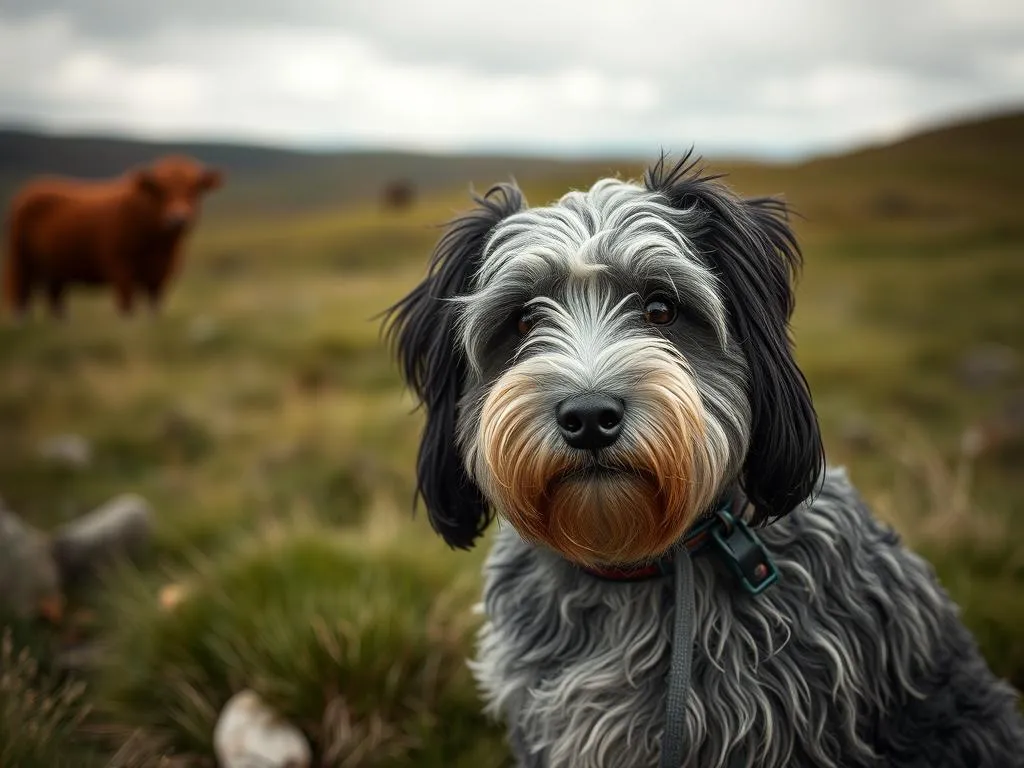
Introduction
Understanding dog breeds is essential for prospective dog owners, as each breed comes with its own unique set of characteristics, needs, and personality traits. Among the multitude of breeds available today, one hybrid that has gained popularity is the Irish Troodle. This delightful mix of the Irish Setter and Poodle not only boasts a stunning appearance but also offers a loving and intelligent companion. In this article, we will delve into the fascinating world of the Irish Troodle, exploring its origins, physical characteristics, temperament, health care requirements, and much more.
Understanding the Irish Troodle
Origin of the Irish Troodle
The Irish Troodle is a crossbreed, resulting from the combination of the Irish Setter and the Poodle. Both parent breeds have rich histories that contribute to the unique traits of the Troodle. The Irish Setter, known for its beautiful, silky red coat, originated in Ireland as a hunting dog, prized for its ability to retrieve game. The Poodle, on the other hand, is a breed recognized for its intelligence and versatility, originally bred as a water retriever in Germany and France.
The trend of breeding hybrid dogs began to gain traction in the late 20th century, as dog lovers sought to combine the best qualities of different breeds. The Irish Troodle was bred to create a dog that is not only visually appealing but also possesses the intelligence of the Poodle and the affectionate nature of the Irish Setter. This hybrid aims to provide a loyal and friendly companion suitable for various lifestyles.
Physical Characteristics
When it comes to the physical traits of the Irish Troodle, this breed typically falls within a medium size range. An adult Troodle usually weighs between 40 to 70 pounds and stands about 18 to 25 inches tall at the shoulder. The size can vary depending on the specific traits inherited from its parent breeds.
The coat of the Irish Troodle is one of its most distinguishing features. It often has a wavy or curly texture, resembling that of the Poodle, which helps to minimize shedding—a significant advantage for allergy sufferers. Coat colors can vary widely, including shades of red, black, brown, or even a combination of these colors, showcasing the diversity within this hybrid breed.
Distinctive features of the Irish Troodle include its long, floppy ears, expressive eyes, and a tail that often has a feathery appearance. These physical characteristics contribute to the dog’s overall charm and appeal.
Temperament and Behavior
The Irish Troodle is known for its friendly and affectionate temperament. This breed is highly intelligent, making it relatively easy to train. They are eager to please their owners, which enhances their adaptability in various living situations. Moreover, Irish Troodles are generally energetic and love to engage in playtime, making them excellent companions for active families.
Socially, Irish Troodles thrive on interaction with humans and other pets. Their gentle nature makes them particularly good with children, and they often form strong bonds with their families. However, like any breed, they may exhibit some behavioral challenges, such as separation anxiety if left alone for extended periods. Early socialization and consistent training can help mitigate these issues, ensuring a well-adjusted pet.
Health and Care Requirements
Common Health Issues
As with any dog breed, the Irish Troodle can be predisposed to certain health issues. While hybrid breeds often benefit from hybrid vigor, meaning they may inherit fewer health problems than purebred dogs, it’s still essential to be aware of potential genetic predispositions. Some common health concerns in Irish Troodles can include hip dysplasia, eye disorders, and skin allergies.
Regular veterinary check-ups are crucial for maintaining the health of your Irish Troodle. Preventative care, including vaccinations and routine screenings, can help identify health issues early on and ensure a long and healthy life for your furry friend.
Grooming Needs
The grooming requirements for the Irish Troodle are relatively moderate, but they do require regular attention due to their unique coat. To keep their coat in good condition, it is recommended to brush them at least two to three times a week. This helps to prevent matting and keeps their fur healthy and shiny.
When it comes to bathing, Irish Troodles do not need frequent baths unless they become particularly dirty. Using a gentle shampoo formulated for dogs will help keep their skin and coat healthy. Additionally, nail trimming and ear cleaning are important aspects of grooming to prevent discomfort and potential health issues.
Exercise Requirements
Irish Troodles are active and energetic dogs that require regular exercise to maintain their physical and mental health. Ideally, they should have at least 60 minutes of exercise daily. This can include walks, playtime in the yard, or engaging in training sessions that stimulate their minds.
Activities such as agility training, fetch, and swimming are excellent ways to keep your Irish Troodle entertained and exercised. It’s important to remember that mental stimulation is just as crucial as physical exercise, so incorporating puzzle toys and obedience training into their routine can help prevent boredom and behavioral issues.
Training and Socialization
Basic Training Tips
Training an Irish Troodle can be a rewarding experience due to their intelligence and eagerness to learn. Positive reinforcement techniques, such as treats and praise, work exceptionally well with this breed. Starting with basic commands like “sit,” “stay,” and “come” can help establish a solid foundation for obedience.
Socialization is equally important, especially for puppies. Exposing your Irish Troodle to different environments, people, and other pets will help them develop into a well-rounded adult dog. Introductory puppy classes or playdates can be beneficial in providing the necessary social experiences.
Challenges in Training
Despite their generally cooperative nature, Irish Troodles can sometimes exhibit stubbornness or distraction during training sessions. It’s essential to maintain consistency and patience when training your dog. If you encounter common behavioral issues such as jumping or barking, addressing them immediately with positive reinforcement can yield better results.
Additionally, if your Irish Troodle shows signs of distraction, consider shortening training sessions to keep them focused. Gradually increasing the complexity of commands and introducing new challenges will help keep your dog engaged and motivated.
Living with an Irish Troodle
Ideal Living Conditions
The Irish Troodle is adaptable and can thrive in various living situations, whether in an apartment or a house. However, they do require sufficient space to move around and play. A home with a fenced yard is ideal, but regular outings to parks or open spaces can also satisfy their exercise needs.
This breed is particularly good with children and can coexist peacefully with other pets, making them an excellent choice for families. Additionally, they tend to adapt well to different climates, although extreme temperatures may require additional care and consideration.
Diet and Nutrition
A balanced diet is crucial for maintaining the health and well-being of your Irish Troodle. High-quality dog food that meets their nutritional needs should be prioritized. It’s important to choose a diet that is appropriate for their age, size, and activity level.
As with any breed, be aware of common dietary restrictions or allergies that your Irish Troodle may develop. Monitoring their diet and consulting with your veterinarian can help ensure they receive the proper nutrition and avoid potential health issues.
Lifespan and Aging
The average lifespan of the Irish Troodle is typically around 12 to 15 years. As your dog ages, their care requirements may change. It’s essential to adjust their diet, exercise, and veterinary care to accommodate their needs as they transition into their senior years.
Being mindful of signs of aging, such as decreased activity or changes in appetite, can help you address any health concerns early on. End-of-life considerations are also important to keep in mind, as ensuring your dog’s comfort and quality of life should remain a priority.
Conclusion
In summary, the Irish Troodle is a wonderful hybrid breed that combines the best traits of the Irish Setter and Poodle. With their affectionate nature, intelligence, and adaptability, they make excellent companions for a variety of families and lifestyles. Understanding their health care requirements, grooming needs, training techniques, and living conditions is crucial for providing a happy and fulfilling life for your Irish Troodle.
Whether you are considering adding an Irish Troodle to your family or already have one, this breed promises to bring joy, loyalty, and love to your life.
FAQs about Irish Troodles
What is an Irish Troodle?
An Irish Troodle is a hybrid dog breed resulting from crossing an Irish Setter with a Poodle. They are known for their friendly temperament and beautiful, low-shedding coats.
Are Irish Troodles good with children?
Yes, Irish Troodles are generally excellent with children and can be very affectionate and gentle companions.
How much exercise do Irish Troodles need?
Irish Troodles require at least 60 minutes of exercise daily, which can include walks, playtime, and mental stimulation activities.
Do Irish Troodles shed?
While Irish Troodles tend to shed less than many other breeds due to their Poodle lineage, regular grooming is necessary to maintain their coat and minimize shedding.
What health issues are common in Irish Troodles?
Some common health concerns for Irish Troodles may include hip dysplasia, eye disorders, and skin allergies. Regular veterinary check-ups are important for early detection and prevention.
How do I train an Irish Troodle?
Using positive reinforcement techniques, such as treats and praise, is effective for training Irish Troodles. Consistency and socialization are key components of their training regimen.
By understanding the Irish Troodle and its needs, potential dog owners can make informed decisions about welcoming this delightful breed into their homes.









